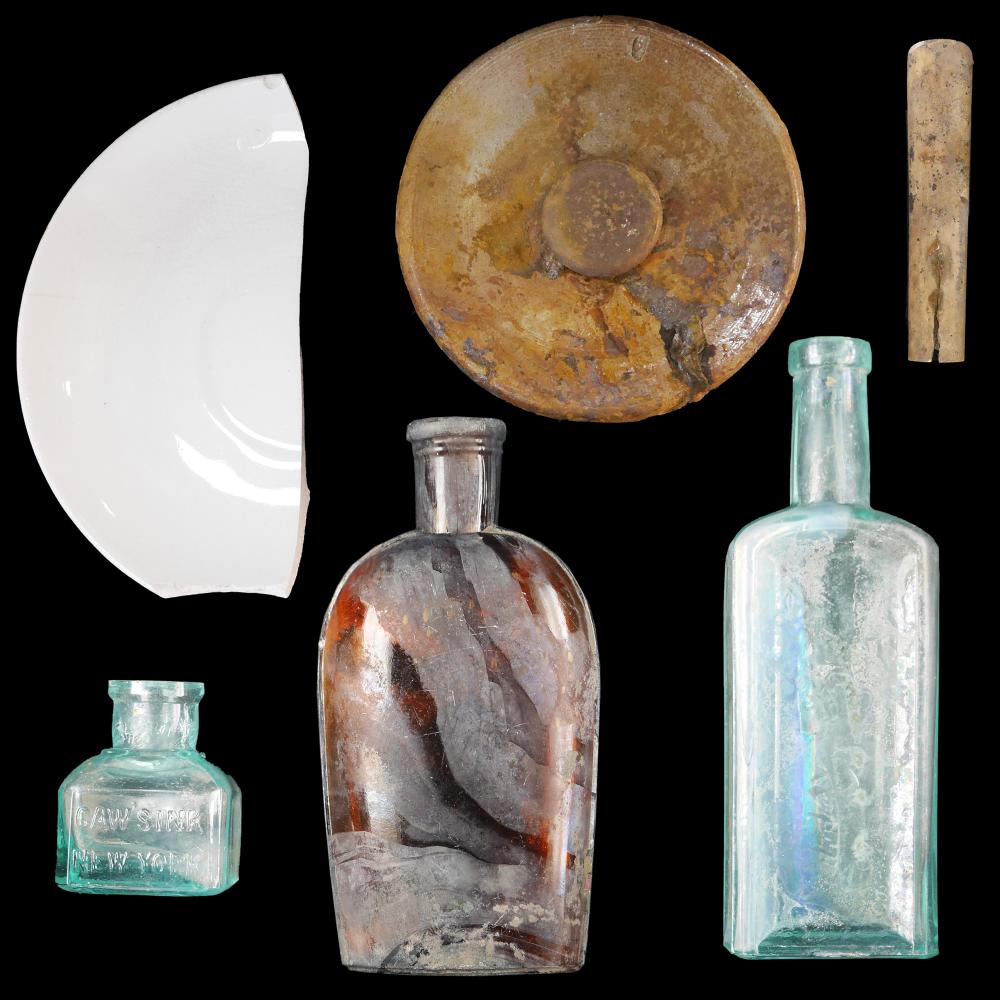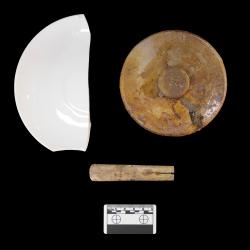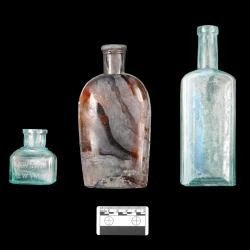In March of 2015, archaeologists excavated 3 wells, 3 cisterns, and one possible privy at 420 Albee Square in Brooklyn, New York. The New York State Museum acquired the resulting collection in 2020. The artifacts recovered from the excavations illustrate the changing demographics in Brooklyn at the turn of the century. During this period, the area transitioned from single family, upper- and middle-class households, to a working-class neighborhood with boarding houses.
One cistern represents the material culture of working-class families living in a boarding house during the last decade of the 19th century. Adjacent cisterns and wells represent the transition from an upper- to middle-class household to a boardinghouse occupied by working class families. Finally, one cistern contained refuse from an upper-middle class single-family during the late 19th century. Together these assemblages document the material consumption patterns of working, middle, and upper-class households in Brooklyn at the turn of the 20th century. Artifacts in the collection include typical household refuse such as bottles, ceramics, and food remains.






